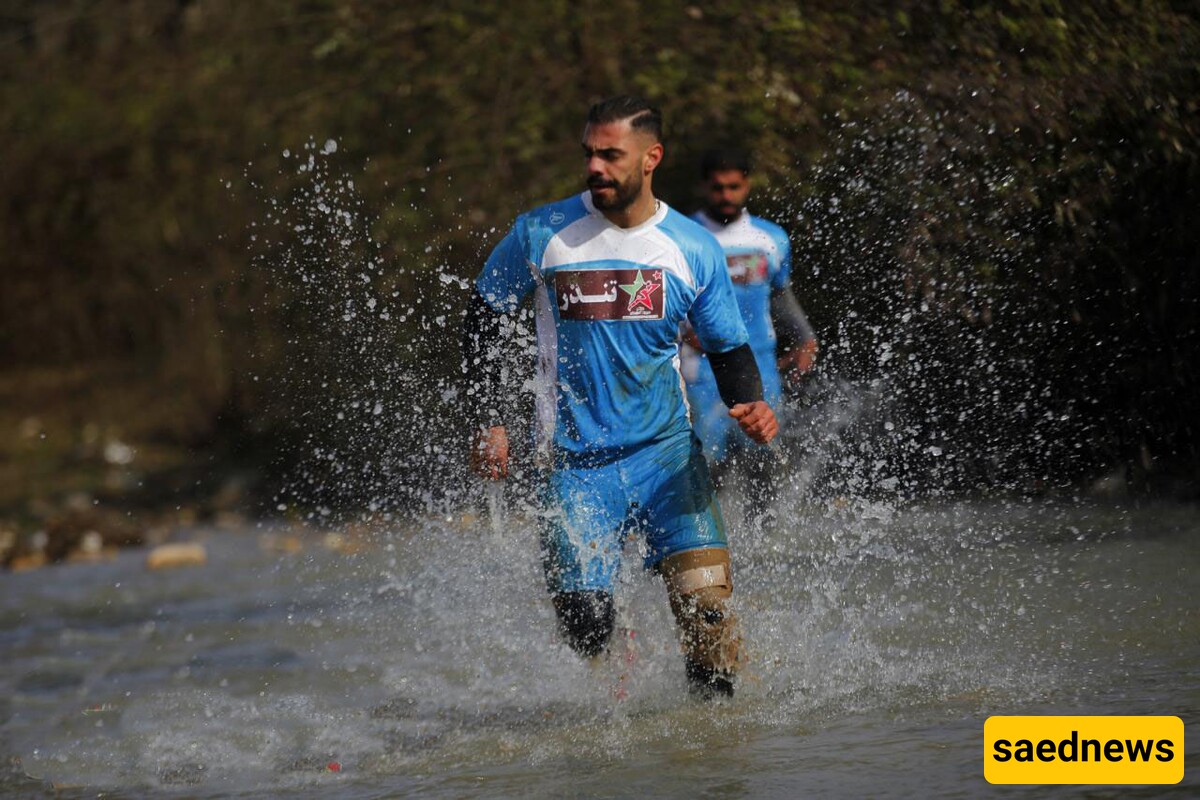SAEDNEWS: Hogam is an exciting athletic discipline that combines adventure with physical fitness and humanitarian aid. Participants engage in overcoming various obstacles, aiming to enhance their physical readiness while fostering a spirit of cooperation and mutual assistance.

Hogam is a thrilling and adventurous sport with a humanitarian approach. It serves as a gateway to fostering goodwill and solidarity among nations. The name Hogam is an acronym derived from the Persian phrase for "The Art of Overcoming Obstacles." It consists of two components: "Ho" (a Persian term referring to the divine essence, echoing a sacred name of God for Muslims) and "Gam" (meaning a step or progress symbolizing altruism, integrity, and personal growth).
Hogam is categorized into two levels—amateur and advanced. Participants navigate artificial and natural obstacles in diverse environments, including mountains, forests, seas, and deserts. The sport has three branches:
Tizgam (Swift Step): Emphasizing speed and agility.
Azarakhsh (Lightning): Focused on individual artistry.
Yooz (Cheetah): Addressing indoor challenges and obstacles.
Recognized internationally as STRAGOS, Hogam is endorsed by the World Federation of Mass Sports.
Hogam competitions are conducted in two formats: individual and team-based.
Individual: In indoor tournaments, players compete in three 20-second rounds. They aim to overcome obstacles in a chase-like setup within the allocated time.
Team-Based: Each team comprises four players and a coach. Athletes must navigate 10 different obstacles together, crossing the finish line as a unit. Coaches can participate as substitutes and provide assistance if necessary.
Competitions are held in four environments: forests, seas, mountains, and deserts.
The standard indoor arena size for national tournaments is 40x20 meters, though larger and smaller arenas are permissible. Equipment includes 10-15 inflatable or artificial obstacles, depending on participant skill levels. Essential protective gear includes:
Helmets
Fingerless gloves
Knee pads
Elbow pads
Sneakers suitable for rugged terrains
Tizgam: Features running, leaping, and climbing steep or challenging terrains, as well as navigating obstacles in forests, seas, mountains, and deserts. Events are held individually or as team relays.
Azarakhsh: Focused on individual skills and artistry.
Yooz: Comprises indoor obstacle challenges.
Participants are grouped by age:
Children: 5–7, 8–9, 10–11 years
Adolescents: 12–15 years
Youth: 16–17 years
Adults: 18–35 years
Veterans: 36+ years
Hogam stands out for its spirit of humanitarian aid and teamwork, fostering leadership, discipline, and selflessness. The sport promotes a culture of altruism, which aligns with its national and international goals.
Hogam incorporates 10 levels of activities, including:
Trekking through forests and mountains
Setting up emergency camps
Providing first aid
Survival skills in challenging conditions
Rappelling
Swimming
Navigating obstacles
Firefighting in natural settings
Both individual and group formats are available, with team events requiring participants to traverse 10 distinct challenges. Competitions are conducted in diverse terrains such as mountains, deserts, forests, and seas.
A standard arena must measure at least 20x40 meters, although larger venues can accommodate the sport. Protective gear for participants includes:
Helmets
Fingerless gloves
Elbow and knee pads
Durable sneakers (e.g., for hiking)
Hogam trains individuals to react swiftly in emergencies, equipping them with life-saving skills in unforeseen events. This sport promotes physical fitness and enhances problem-solving abilities, particularly in environments where professional emergency services may not be immediately available. Athletes trained in Hogam can act as first responders, safeguarding lives and property before official aid arrives.
The sport also plays a significant role in fostering a global culture of humanitarianism.
Hogam offers several benefits, including:
Improved physical fitness and flexibility
Enhanced coordination and muscle strength
Agility and quick reflexes
Increased concentration
Mental resilience in stressful situations
Participants develop skills to manage emergencies like wildfires, floods, storms, animal attacks, drowning, falls, snake bites, psychological pressures, and traffic accidents.
Hogam was established in 2011 in Iran and officially recognized by the Ministry of Sports in 2018. On December 17, 2018, Iranian martial arts champion Meqdad Kamrani secured ministry approval for Hogam under the Natural Sports Association of the Mass Sports Federation. Kamrani later initiated professional activities in Hamadan, following a conference attended by representatives from eight countries, including China, Turkey, and Afghanistan. Two delegates, Khalid Masih (Pakistan) and Meqdad Kamrani (Iran), were elected for a four-year term, signaling the sport’s global recognition

